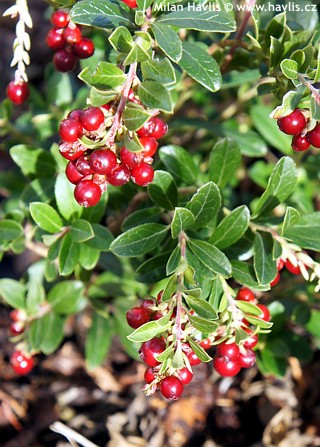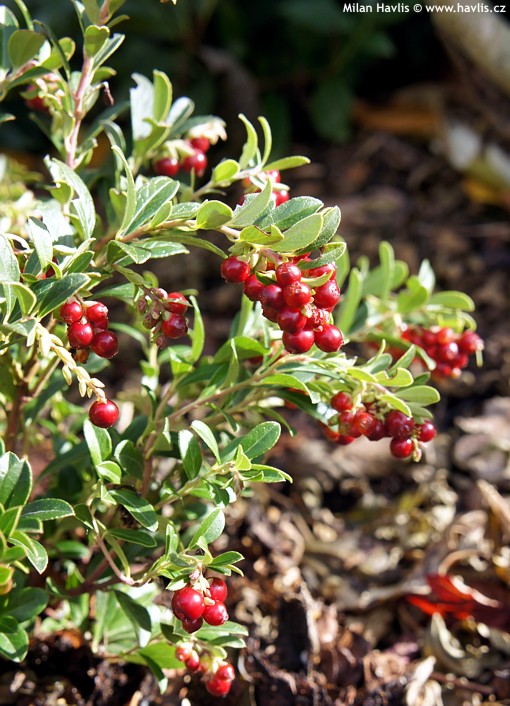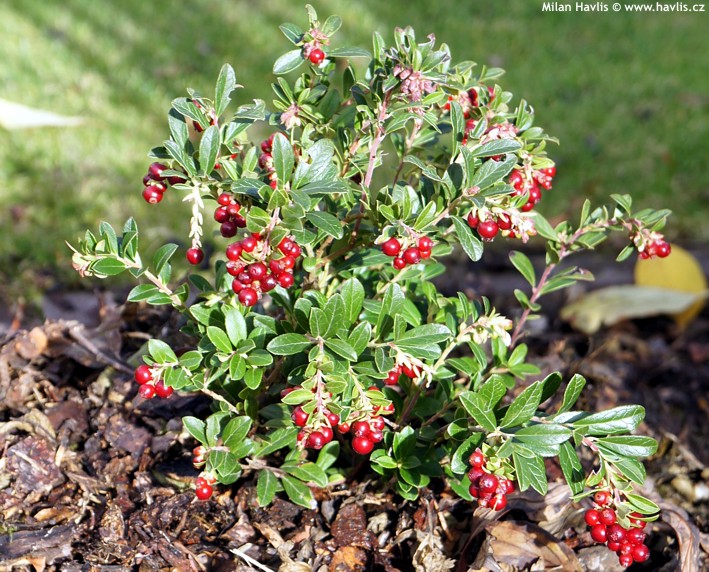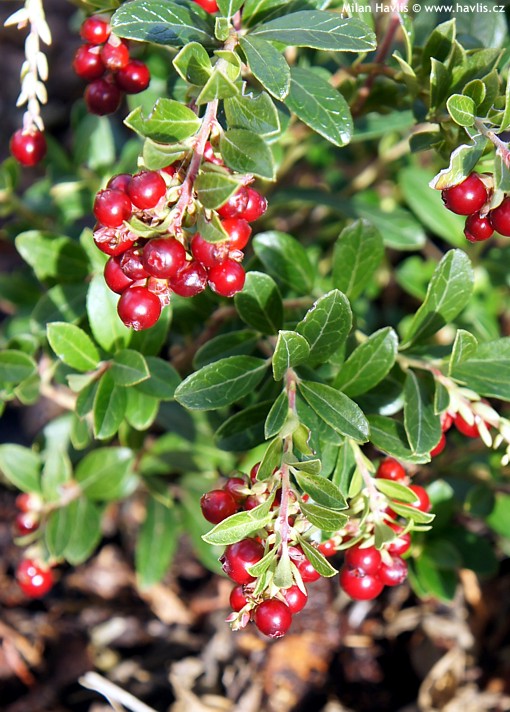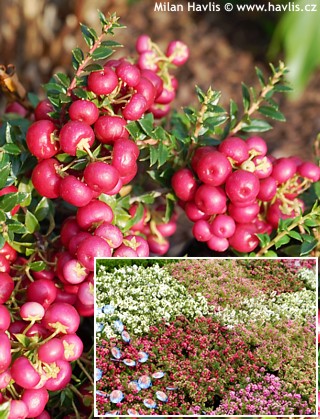Vaccinium vitis-idaea 'KORALLE' cowberry, lowbush cranberry
size/type
low or groundcovering,low or groundcovering
usual height
0,2-0,3m
leaves
evergreen broadleaf
colour of leaves
flowers
less showy but noticeable
colour of flowers
blooming time
May-June
location
full to partial sun
USDA zone (lowest)
2 (down to -45°C)
winter protection
for zone 5+6

for zone 7

categorized
Description of the plant:
Cowberry or lowbush cranberry is an evergreen shrub with delicious fruit. Though it is not considered a true cranberry in English speaking countries, in Central Europe this species is the one commonly used for cranberry preserves and typical sweet and sour tasting chutneys. Koralle is supposed to be the best fruiting variety with dense habit for which it is commonly used as an ornamental shrub as well.Its evergreen leaves are leathery, broadly elliptic, small, and glossy. Urn-shaped flowers are white or light pink and appear in late spring and early summer, and are followed by spherical, bright red and glossy, edible fruit. It is known for successful healing of urinary tracts where bacteria causing the infection are surrounded by the cranberry substance and maneuvered out of the body without letting the bacteria cause any damage. The fruit is picked once it gains bright red colour in early autumn, or after the first frost if you are planning to make jams and preserves of it. If you want to make a 100% healthy product we suggest using only fructose or organic, natural cane sugar as opposed to white sugar which degrades any healthy food.
Lowbush cranberry forms a low, ground-covering, slow-growing shrub. It likes filtered sunlight or full sun and needs highly acidic, well-drained soil. Usage of organic fertilizers for ericaceous plants will enhance growth rate, branching, and obviously crop. Pruning is not usually required but may be done in late spring after flowering. Fully hardy to -45°C (USDA zone 2) and is suitable for outdoor pots.
Last update 23-11-2012
QUICK PRICE OVERVIEW
CURRENTLY SOLD OUT
WANT TO TRY A SIMILAR PLANT?












